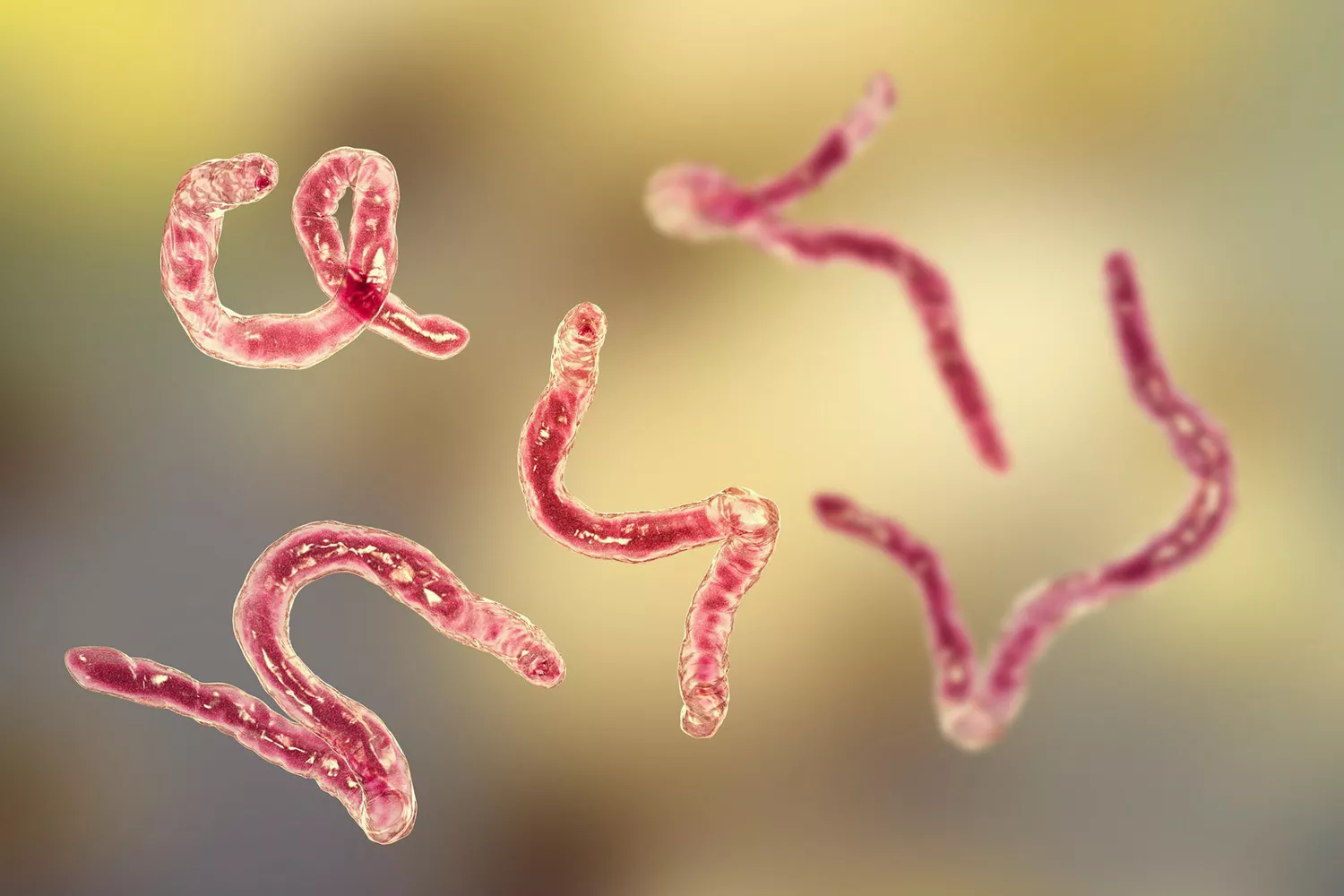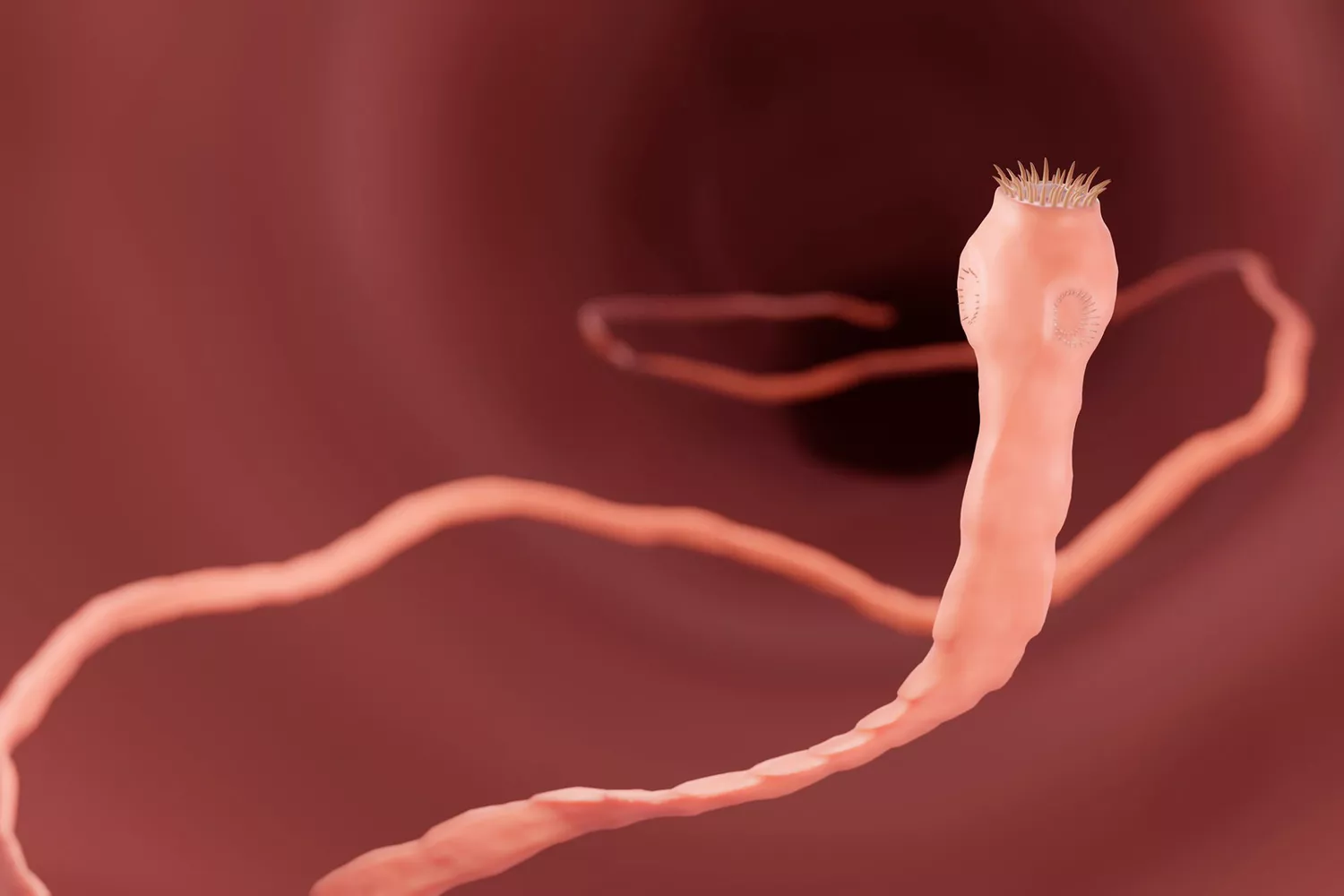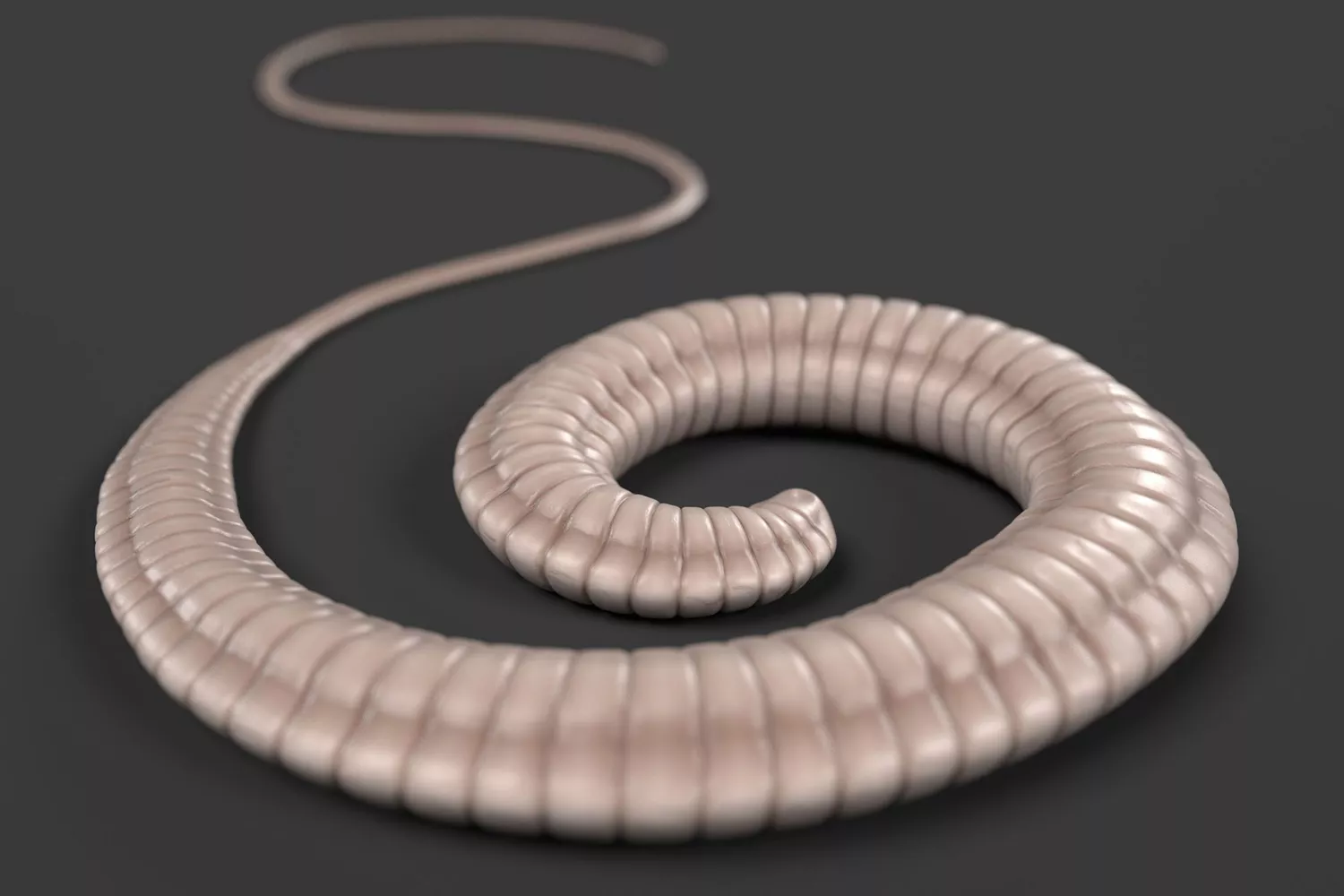Intestinal worms are common unwanted guests in dogs. While these pesky parasites often don’t cause any noticeable signs in their hosts, it’s important to catch them before they harm your pet or are able to infect other animals. Luckily, both the treatment and prevention of worms in dogs are relatively simple.

Which Types of Worms Infect Dogs?
Multiple types of worms, each with its own set of unique features, can infect dogs. Here are the most common of these parasites found in dogs:
Roundworms
Hookworms
Tapeworms
Whipworms
Heartworms
Roundworms

Roundworms (also called Ascarids) are long brown worms that look like cooked spaghetti, says Jess Nichols, DVM, chief veterinary officer of Spay and Neuter Kansas City in Kansas City, Mo. According to the Companion Animal Parasite Council (CAPC), an independent nonprofit led by veterinary professionals and parasite experts, roundworms are the most common parasitic worms found in dogs—especially puppies.
Causes
Dogs can become infected with roundworms in several ways, which is why the condition is so common. Puppies can get the parasite from their mom, either while in the womb via the placenta or through nursing after they’re born, according to CAPC. Both puppies and adult dogs can get roundworms by accidentally eating them in their environment (infected dogs and cats shed roundworm eggs in their poop) or in the meat of an infected bird or rodent.
Symptoms
The signs and symptoms of worms vary by parasite and can also depend on the dog’s age and how many worms they have. Often, however, dogs with intestinal worms don’t show any signs. Puppies infected with roundworms are more likely to have signs than adult dogs. According to CAPC, puppies who were infected before birth may not grow or gain weight as they should and can have a poor hair coat and pot-bellied appearance. Other possible signs of roundworms in dogs include vomiting, diarrhea, and blocked intestines.
Hookworms

Hookworms are small (1–2 cm) white worms. A slight bend at the front of the body makes them look similar to a fishing hook. They are particularly nasty parasites. Unlike other worms that eat food and drink materials floating in the pet’s intestines, hookworms are bloodsuckers, Nichols says. The parasites literally hook themselves to the walls of a dog’s intestines with their teeth, release a substance that prevents the host animal’s blood from clotting, and suck the animal’s blood.
Causes
Adult hookworms in a dog’s intestines mate and deposit their eggs in the poop of the infected animal, Nichols says. These eggs later hatch, releasing baby hookworms into the soil. Dogs can become infected by eating these baby hookworms from the soil or by eating small animals or cockroaches infected with the parasite. Baby hookworms are also able to infect dogs by burrowing into their skin. As with roundworms, puppies can also become infected with hookworms via their mother’s milk, says Richard Meadows, DVM, DABVP, a professor at the University of Missouri College of Veterinary Medicine in Columbia, Mo.
Symptoms
CAPC says dog hookworms consume more blood than other worm species and thus tend to cause more serious problems—even death in puppies. Puppies infected with hookworms may show these signs and symptoms:
Anemia (meaning they don’t have enough red blood cells to carry the oxygen their body needs)
Pale gums
Poor hair coat
Failure to gain weight
Dehydration
Dark, tar-like diarrhea
Otherwise healthy adult dogs infected with hookworms may have no sign of infection but sometimes develop many of the same signs as puppies. Also, a hookworm that has entered a pet by tunneling into its skin can leave behind itchy, irritated skin wounds—typically between the dog’s toes.
Tapeworms

Tapeworms are long, flat, white segmented parasites with hook-like mouthparts that they use to attach themselves to the intestinal walls of pets, Nichols says. Adult tapeworms will shed segments of their body (called proglottids) into the infected dog’s poop. Proglottids look like grains of rice and are commonly seen in the dog’s poop, near his rear end, and in his living area (for example, on bedding). These segments will eventually break open to release tapeworm eggs into the environment.
Causes
Dogs become infected with tapeworms by eating an intermediate host. Fleas, rodents (such as mice, rats, and squirrels), and rabbits are all intermediate hosts of tapeworms. The hosts eat the eggs proglottids release into the environment, Nichols says. When these intermediate hosts are eaten by a dog, the dog becomes the new parasite host.
Symptoms
The most common clinical sign of tapeworms that pet owners notice is the presence of rice-like proglottids in their dog’s poop or around the dog’s rear end. However, CAPC notes that dogs may also experience irritation and itchiness around their rear ends. Dogs infested with a lot of worms can end up with blocked intestines.
Whipworms

According to CAPC, whipworms are named for their whip-like body shape, as they are long and thin in the front (the “lash” of the whip) and have a shorter, thicker rear end (the “handle” of the whip). CAPC adds that most adult whipworms live in the dog’s cecum, where the small intestine and large intestine meet. Similar to hookworms, whipworms feed on the animal’s blood.
Causes
Adult whipworms release their eggs in the infected dog’s poop. These eggs can infect other dogs if eaten.
Symptoms
Dogs infected with a high number of whipworms may experience bloody diarrhea, weight loss, dehydration, and anemia, according to CAPC. Left untreated, serious whipworm infections can result in death.
Heartworms
Unlike intestinal worms, heartworms are long, spaghetti-like parasites that infect the heart and lungs, where they can cause serious disease.
Causes
The American Heartworm Society explains that the most common cause of heartworms in dogs is transmission via mosquito bites. When a mosquito sucks blood from an infected dog, fox, coyote, or wolf, it can carry heartworm larvae and deposit them into the next animal it bites. If your pet is that animal, the larvae can mature inside their body and produce an infection in their heart and lungs.
Symptoms
Common signs of heartworm disease in dogs include:
Coughing
Vomiting
Not wanting to exercise
Weight loss
Difficulty breathing
Pale gums
Dark or bloody urine
Collapse
How Are Intestinal Worms Diagnosed and Treated in Dogs?
Though intestinal worms can cause serious problems in dogs, the condition is usually very treatable. In the case of roundworms, hookworms, and whipworms, diagnosis is often done with a fecal float test, which involves using a microscope to look for parasite eggs in a sample of the dog’s poop, Nichols says. Because dogs can have roundworms, hookworms, or whipworms without showing any signs, CAPC recommends using a fecal float test to screen all dogs for the parasites once or twice a year. Puppies, however, should be tested at least four times a year. The test is often a part of regular wellness exams.
Dogs infected with roundworms, hookworms, or whipworms are typically given an anthelmintic medication (commonly called a dewormer) that will immediately start killing the worms, Nichols says. Multiple doses and follow-up testing may be needed. Because roundworms and hookworms are so common in puppies, they’re usually given deworming drugs as a precaution against these parasites.
Hookworms Are Now Resisting Drug Treatments—Here’s What to Do
Unfortunately, Nichols says, fecal float tests aren’t as reliable at detecting tapeworms. This means owners play a crucial role in catching tapeworm infections by spotting and reporting proglottids. Tapeworms are also treated with deworming medications that kill the parasites without harming the host.
How Do You Prevent Worms in Dogs?
Monthly heartworm preventive medications have a misleading name, according to Meadows. “We really sell them short by calling them that, as they don’t just protect against heartworms,” he says. “They prevent hookworms and roundworms too, and some protect against whipworms as well.”
Simparica Trio in Dogs Might Be the Easiest Way to Protect Your Pup From Parasites
Because tapeworms can be transmitted by fleas, keeping your dog on a year-round flea preventative is also important. Your veterinarian will work with you to find the best monthly parasite preventatives for your dog.
Simple steps you can take at home can help reduce your dog’s odds of becoming infected with intestinal worms. Picking up your dog’s poop as soon as possible and preventing your dog from eating any small animals or birds (by always walking your dog on a leash or keeping them in a fenced area, for example) are two effective steps.
Can Humans Get Worms From Dogs?
According to the Centers for Disease Control and Prevention (CDC), yes, humans can get worms from dogs. It’s important to protect yourself, your human family members, and your pets from these harmful infections.
In addition to keeping your pets on preventative medications, the CDC also recommends adults and children wash their hands with soap and water after playing with pets, picking up poop, and before handling food. The organization also suggests people avoid touching surfaces and objects that may be contaminated with animal feces and always follow leash laws.



